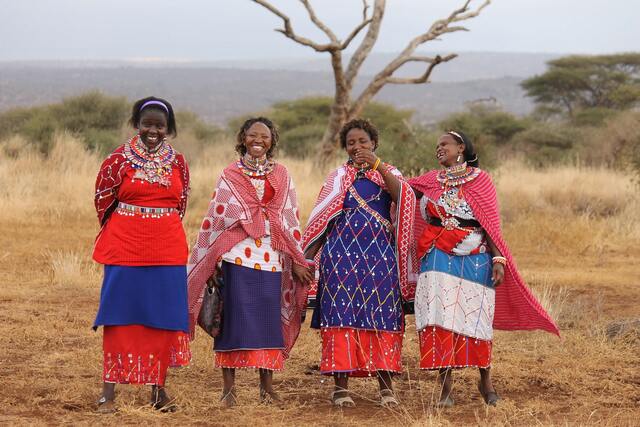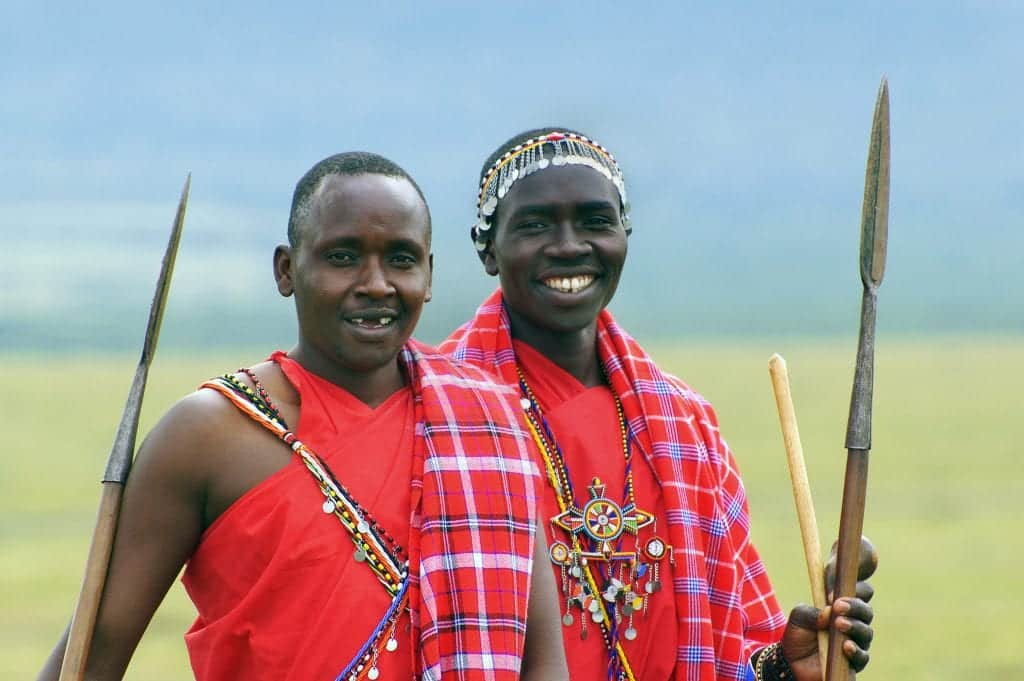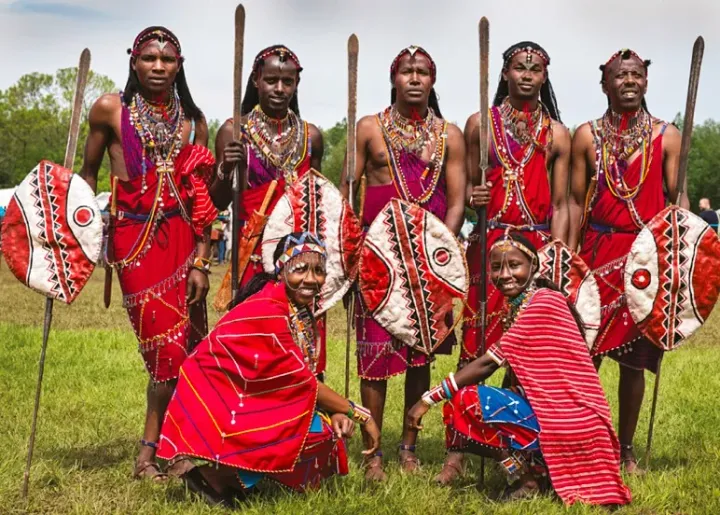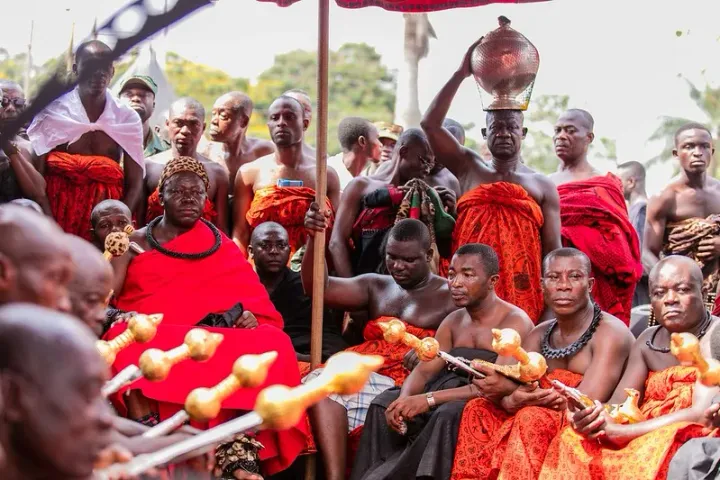Welcome to this weeks post, today is about the vibrant culture of the Maasai People.
The Maasai people, known for their resilience and pastoralist lifestyle, have called the East African region home for centuries. Originating from the Nile region of Sudan, they migrated southward to their current territories in Kenya and Tanzania around the 15th century. Today, they predominantly live in the vast savannahs and grasslands of the Great Rift Valley.

The Maasai embrace a proud cultural identity that is intricately worked into their daily lives. Central to their heritage is a deep sense of community and a strong adherence to age-old customs. A distinguishing feature of Maasai culture is their vibrant attire, characterized by the striking red robes worn by both men and women, known as shukas. These garments, decorated with intricate beadwork, serve as an expression of the Maasai identity and their connection to the land and their ancestors.
Among the many fascinating aspects of Maasai culture, the warrior tradition stands out prominently. Young Maasai men, upon reaching adolescence, undertake a rite of passage known as the Eunoto ceremony, marking their transition into adulthood. These warriors, or morans, are responsible for safety their communities and defending their livestock. Through age-old practices like spear throwing and traditional dance forms, the morans exemplify bravery and unity, reinforcing the fabric of Maasai society.

Traditionally, the Maasai have been nomadic pastoralists, relying on their livestock—primarily cattle, goats, and sheep—for sustenance and wealth. Their deep bond with their animals is evident in the respect and care they provide, as livestock plays an integral role in their social and economic fabric. The Maasai's harmonious relationship with nature and their sustainable farming practices are testament to their profound understanding of the environment.
Maasai spirituality is deeply rooted in their connection with nature. They believe in a supreme being named Enkai, who is responsible for providing life and blessings. The Maasai's spiritual practices are intertwined with their daily routines, where rituals and ceremonies play a vital role in maintaining harmony within the community. The famous jumping dance, performed during festivities and rituals, reflects their reverence for their gods and ancestors.

While the Maasai have proudly maintained their cultural practices, they face modern challenges that necessitate adaptation. Factors such as population growth, limited access to education, and environmental pressures pose significant threats to their traditional way of life. Nonetheless, the Maasai are resilient and determined to preserve their cultural heritage, while also embracing opportunities for economic growth and education.
The Maasai people captivate us with their rich cultural tapestry and unwavering connection to their ancestral roots. From their striking attire to their deep spirituality and enduring traditions, the Maasai show a connection with nature and each other.
Sources:
“Maasai Tribe.” Maasai Tribe Facts, Language, Religion, Culture, Diet & Clothing, www.masaimara.travel/maasai-tribe-facts.php. Accessed 15 June 2023.
Almaden, Sarah Angela. “The Maasai: Interesting Facts You Should Know: Beelinguapp Blog.” Beelinguapp, 14 Nov. 2022, beelinguapp.com/blog/the-maasai-interesting-facts. Accessed 16 June 2023.



